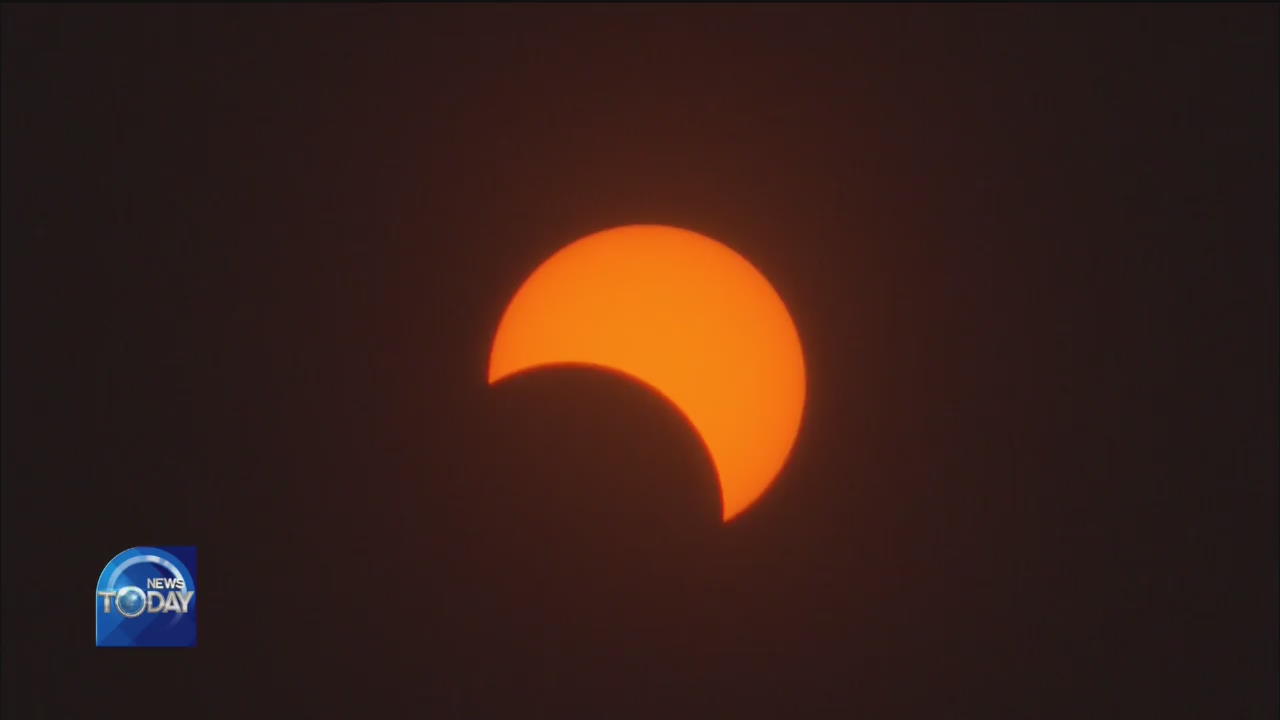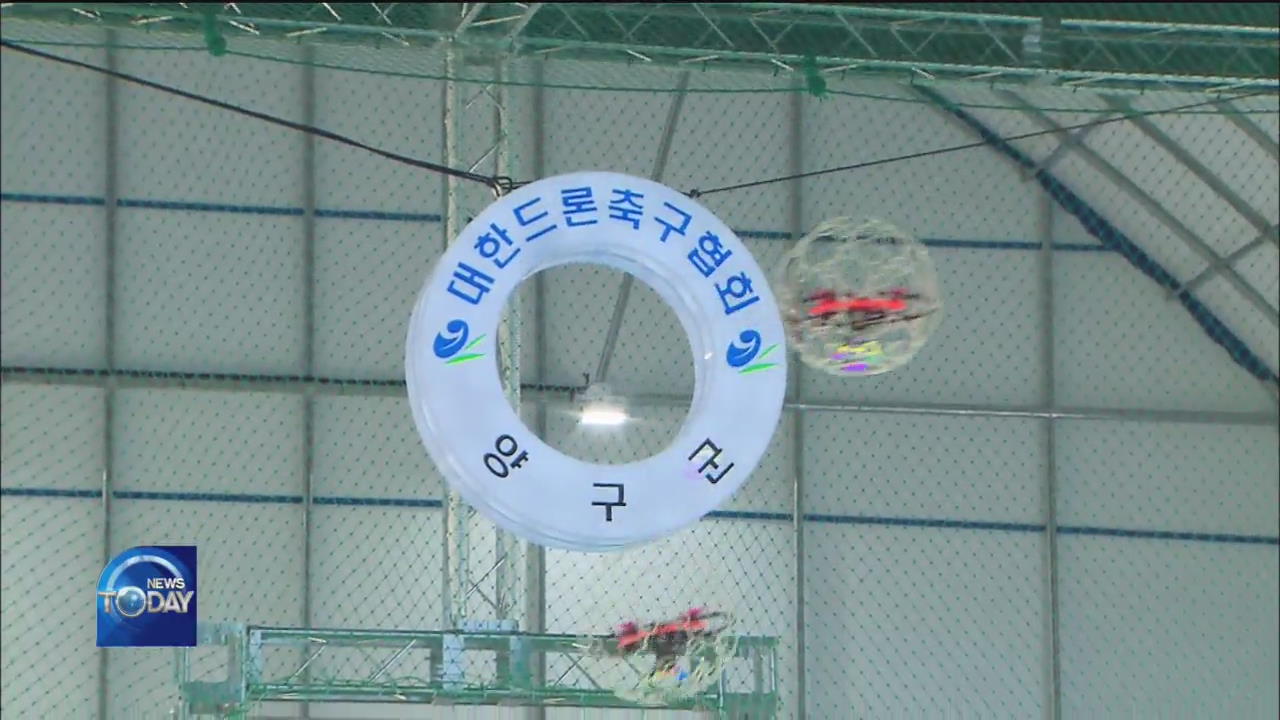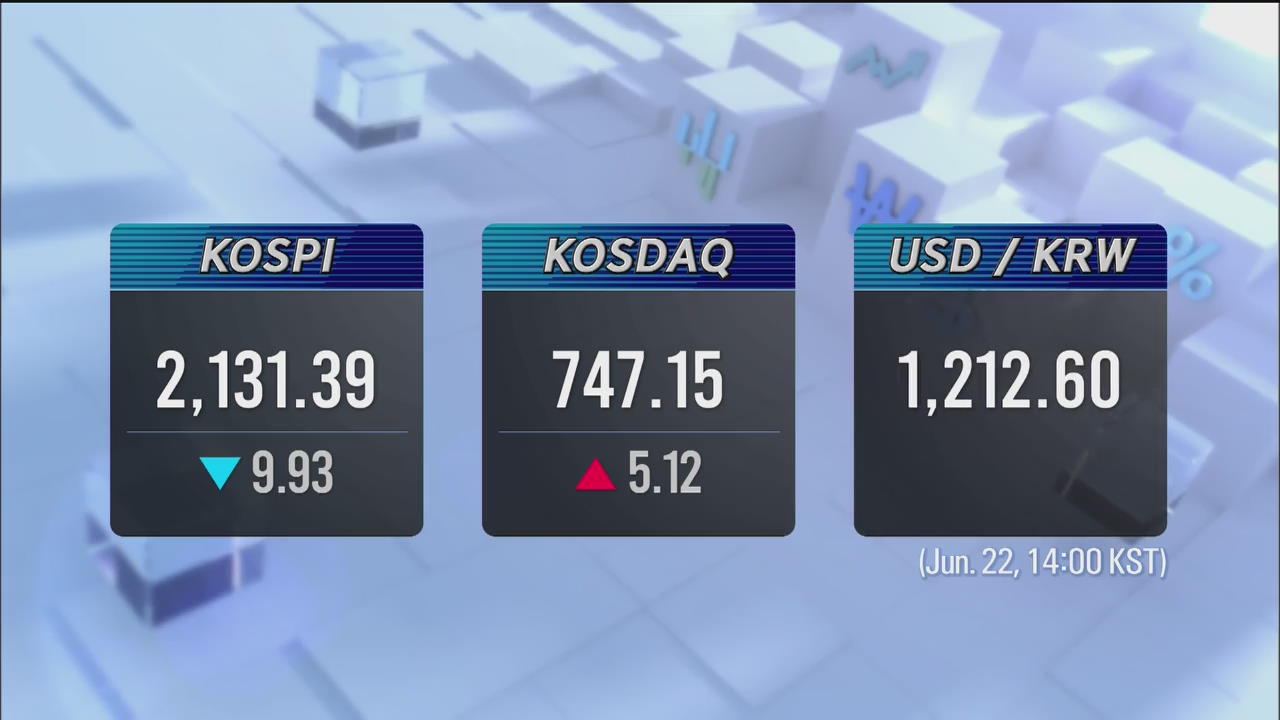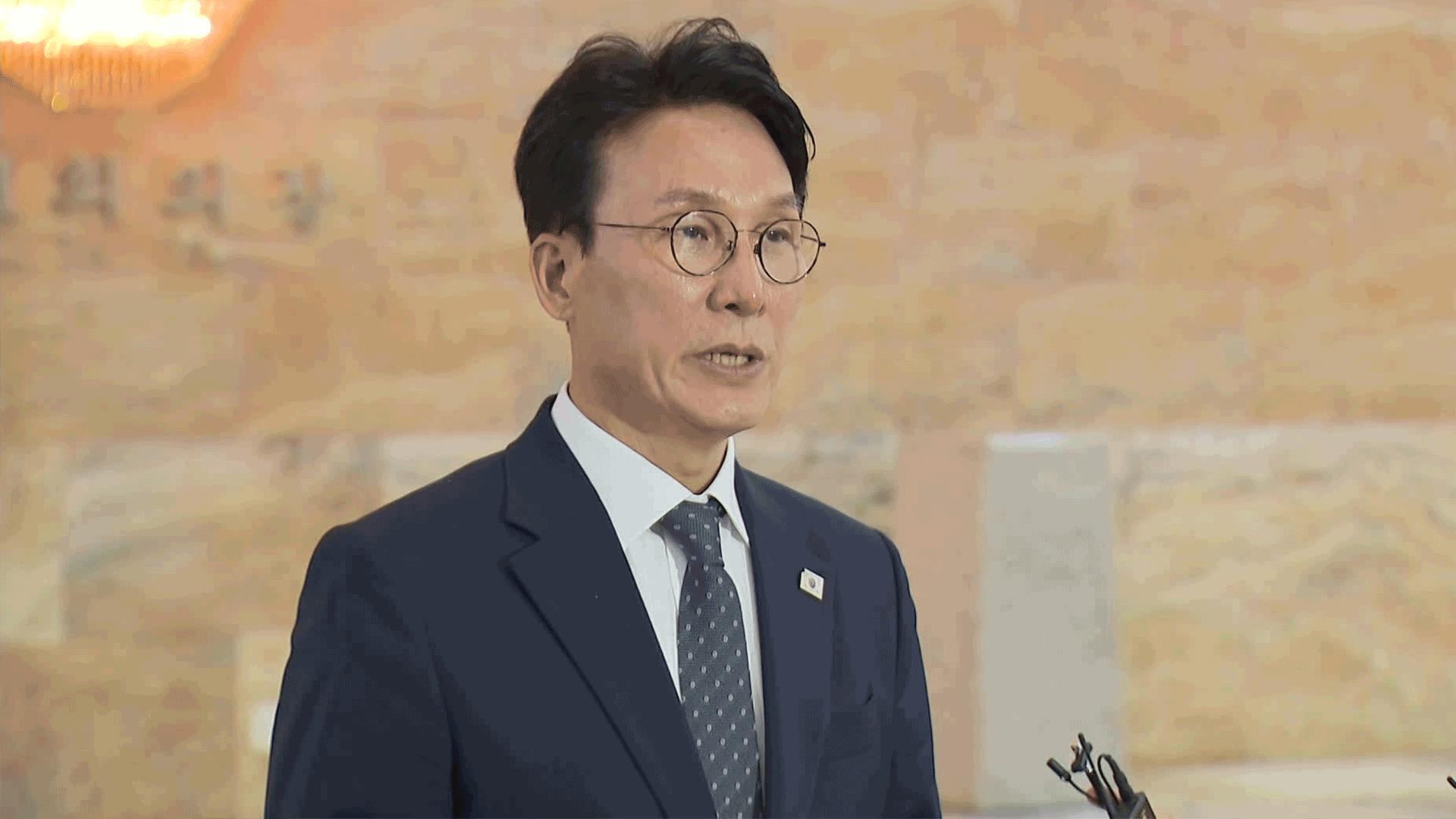TWO HOURS OF PARTIAL SOLAR ECLIPSE
입력 2020.06.22 (15:13)
수정 2020.06.22 (16:47)
읽어주기 기능은 크롬기반의
브라우저에서만 사용하실 수 있습니다.
[Anchor Lead]
A partial solar eclipse occurs when the moon partially passes in front of the sun. This spectacle took place for two hours yesterday afternoon. Those who missed it will have to wait ten years before witnessing another one in Korea.
[Pkg]
In the late afternoon with the sun sizzling down on the ground. The moon starts to gradually cover up the sun. About an hour and a half later, about half of the sun is covered.
[Soundbite] "Three, two, one! (Watch the moon covering the sun!)"
A partial solar eclipse occurs when the sun, the moon and the Earth align. The eclipse began at around 4 PM and was at its peak at about 5 PM. The last partial eclipse was in 2012, when 80% of the sun was blocked. The latest one covered the most area in 8 years, with 45% of the sun blocked in Seoul and 57% in Jeju. The spectacle lasted for about two hours. The clear weather allowed the eclipse to be visible from most parts of the country. Children used telescopes and put on protective glasses to observe the rare event.
[Soundbite] OH JUN-HO(SEOUL RESIDENT) : "I've only seen it in pictures. But now that I actually saw the moon covering the sun, it was wonderful and I want to see it again."
It was also an exciting afternoon for adults worn out by the COVID-19 pandemic.
[Soundbite] KIM MIN-SEOK(KOREA AMATEUR ASTRONOMICAL ASSOCIATION) : "I brought the solar filters and corona filters. I hope everyone would overcome COVID-19 by looking at the solar corona through the filters."
A live online broadcast replaced the usual large-scale gathering, which would have taken place if not for the pandemic.
[Soundbite] LEE JONG-SU(GWACHEON NAT'L SCIENCE MUSEUM) : "If you see through several layers of cellophane, you'll be able to see the red sun."
People in some parts of Asia, such as Pakistan, as well as East Africa were able to observe the annular or 'ring of fire' eclipse in which only the outer edges of the sun are visible. The next partial solar eclipse observable in Korea is projected to be in ten years time, on June 1st, 2030.
A partial solar eclipse occurs when the moon partially passes in front of the sun. This spectacle took place for two hours yesterday afternoon. Those who missed it will have to wait ten years before witnessing another one in Korea.
[Pkg]
In the late afternoon with the sun sizzling down on the ground. The moon starts to gradually cover up the sun. About an hour and a half later, about half of the sun is covered.
[Soundbite] "Three, two, one! (Watch the moon covering the sun!)"
A partial solar eclipse occurs when the sun, the moon and the Earth align. The eclipse began at around 4 PM and was at its peak at about 5 PM. The last partial eclipse was in 2012, when 80% of the sun was blocked. The latest one covered the most area in 8 years, with 45% of the sun blocked in Seoul and 57% in Jeju. The spectacle lasted for about two hours. The clear weather allowed the eclipse to be visible from most parts of the country. Children used telescopes and put on protective glasses to observe the rare event.
[Soundbite] OH JUN-HO(SEOUL RESIDENT) : "I've only seen it in pictures. But now that I actually saw the moon covering the sun, it was wonderful and I want to see it again."
It was also an exciting afternoon for adults worn out by the COVID-19 pandemic.
[Soundbite] KIM MIN-SEOK(KOREA AMATEUR ASTRONOMICAL ASSOCIATION) : "I brought the solar filters and corona filters. I hope everyone would overcome COVID-19 by looking at the solar corona through the filters."
A live online broadcast replaced the usual large-scale gathering, which would have taken place if not for the pandemic.
[Soundbite] LEE JONG-SU(GWACHEON NAT'L SCIENCE MUSEUM) : "If you see through several layers of cellophane, you'll be able to see the red sun."
People in some parts of Asia, such as Pakistan, as well as East Africa were able to observe the annular or 'ring of fire' eclipse in which only the outer edges of the sun are visible. The next partial solar eclipse observable in Korea is projected to be in ten years time, on June 1st, 2030.
■ 제보하기
▷ 카카오톡 : 'KBS제보' 검색, 채널 추가
▷ 전화 : 02-781-1234, 4444
▷ 이메일 : kbs1234@kbs.co.kr
▷ 유튜브, 네이버, 카카오에서도 KBS뉴스를 구독해주세요!
- TWO HOURS OF PARTIAL SOLAR ECLIPSE
-
- 입력 2020-06-22 15:09:46
- 수정2020-06-22 16:47:21

[Anchor Lead]
A partial solar eclipse occurs when the moon partially passes in front of the sun. This spectacle took place for two hours yesterday afternoon. Those who missed it will have to wait ten years before witnessing another one in Korea.
[Pkg]
In the late afternoon with the sun sizzling down on the ground. The moon starts to gradually cover up the sun. About an hour and a half later, about half of the sun is covered.
[Soundbite] "Three, two, one! (Watch the moon covering the sun!)"
A partial solar eclipse occurs when the sun, the moon and the Earth align. The eclipse began at around 4 PM and was at its peak at about 5 PM. The last partial eclipse was in 2012, when 80% of the sun was blocked. The latest one covered the most area in 8 years, with 45% of the sun blocked in Seoul and 57% in Jeju. The spectacle lasted for about two hours. The clear weather allowed the eclipse to be visible from most parts of the country. Children used telescopes and put on protective glasses to observe the rare event.
[Soundbite] OH JUN-HO(SEOUL RESIDENT) : "I've only seen it in pictures. But now that I actually saw the moon covering the sun, it was wonderful and I want to see it again."
It was also an exciting afternoon for adults worn out by the COVID-19 pandemic.
[Soundbite] KIM MIN-SEOK(KOREA AMATEUR ASTRONOMICAL ASSOCIATION) : "I brought the solar filters and corona filters. I hope everyone would overcome COVID-19 by looking at the solar corona through the filters."
A live online broadcast replaced the usual large-scale gathering, which would have taken place if not for the pandemic.
[Soundbite] LEE JONG-SU(GWACHEON NAT'L SCIENCE MUSEUM) : "If you see through several layers of cellophane, you'll be able to see the red sun."
People in some parts of Asia, such as Pakistan, as well as East Africa were able to observe the annular or 'ring of fire' eclipse in which only the outer edges of the sun are visible. The next partial solar eclipse observable in Korea is projected to be in ten years time, on June 1st, 2030.
A partial solar eclipse occurs when the moon partially passes in front of the sun. This spectacle took place for two hours yesterday afternoon. Those who missed it will have to wait ten years before witnessing another one in Korea.
[Pkg]
In the late afternoon with the sun sizzling down on the ground. The moon starts to gradually cover up the sun. About an hour and a half later, about half of the sun is covered.
[Soundbite] "Three, two, one! (Watch the moon covering the sun!)"
A partial solar eclipse occurs when the sun, the moon and the Earth align. The eclipse began at around 4 PM and was at its peak at about 5 PM. The last partial eclipse was in 2012, when 80% of the sun was blocked. The latest one covered the most area in 8 years, with 45% of the sun blocked in Seoul and 57% in Jeju. The spectacle lasted for about two hours. The clear weather allowed the eclipse to be visible from most parts of the country. Children used telescopes and put on protective glasses to observe the rare event.
[Soundbite] OH JUN-HO(SEOUL RESIDENT) : "I've only seen it in pictures. But now that I actually saw the moon covering the sun, it was wonderful and I want to see it again."
It was also an exciting afternoon for adults worn out by the COVID-19 pandemic.
[Soundbite] KIM MIN-SEOK(KOREA AMATEUR ASTRONOMICAL ASSOCIATION) : "I brought the solar filters and corona filters. I hope everyone would overcome COVID-19 by looking at the solar corona through the filters."
A live online broadcast replaced the usual large-scale gathering, which would have taken place if not for the pandemic.
[Soundbite] LEE JONG-SU(GWACHEON NAT'L SCIENCE MUSEUM) : "If you see through several layers of cellophane, you'll be able to see the red sun."
People in some parts of Asia, such as Pakistan, as well as East Africa were able to observe the annular or 'ring of fire' eclipse in which only the outer edges of the sun are visible. The next partial solar eclipse observable in Korea is projected to be in ten years time, on June 1st, 2030.
이 기사가 좋으셨다면
-
좋아요
0
-
응원해요
0
-
후속 원해요
0













![[단독] 도이치 주포 “김건희, 내 덕에 떼돈 벌어…22억 원 주문”](/data/news/2025/07/03/20250703_KpuU43.png)
![[단독] “쪽지 얼핏 봤다, 안 받았다”더니…CCTV에선 문건 챙긴 이상민](/data/news/2025/07/03/20250703_Lv3LjI.png)


이 기사에 대한 의견을 남겨주세요.